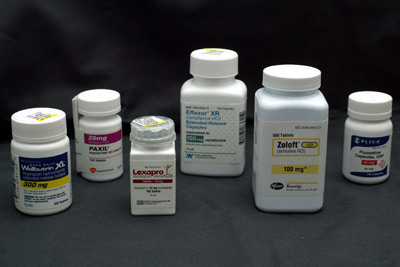Antidepressants are medications used pharmacologically in treating and counteracting various psychiatric diseases such as anxiety-related disorders and depressions. These drugs are mainly prescribed according to their efficiency (antagonistic effects or unfavorable effects), tolerability state, and safety. Antidepressants are classified into different categories. Some commonly used monoamines, Serotonin reuptake inhibitors (SSRIs) and serotonin-norepinephrine reuptake inhibitors (SNRIs). These drugs have higher adverse effects on youths below 25 years (Friedman, 2014). This paper tries to mention various classifications of the depressants, how they work, and the effects they cause when prescribed to respective patients.
Selective Serotonin Reuptake Inhibitors (SSRIs)
The Selective Serotonin Reuptake Inhibitors (SSRIs) are types of depressants that work by halting the reuptake of neurotransmitters in the human body. These antidepressants are also referred to as reabsorption inhibitors—for example, duloxetine and venlafaxine. Neurotransmitters reuptake is controlled to be more in the brain for the action of these (SSRIs) to work effectively. Specifically, (SSRIs) work by preventing the reabsorption of serotonin (Berigan, 2004).
Monoamine Oxidase Inhibitors (MAOIs)
Monoamine Oxidase Inhibitors (MAOIs) are types of antidepressants that work on the enzyme monoamine oxidase. Examples are phenelzine and selegiline(Fasipe, 2018). The Monoamine oxidase enzyme’s function is to break down monoamine. (MAOIs) prevents the breakdown of monoamine, allowing the availability of more neurotransmitters in the brain to bring about mood regulation feelings (Miller, 2010).
Tricyclic Antidepressants (TCAs)
These are antidepressants named after their structure formation of three atoms. TCAs act similarly to the reabsorption of inhibitors. They prevent serotonin and norepinephrine, and another neurotransmitter called acetylcholine from being absorbed into nerve cells (which helps regulate the movement of skeletal muscles). Examples of these drugs are trimipramine and protriptyline(“Functional and Structural Interactions between Selective Serotonin Reuptake Inhibitors and Nicotinic Acetylcholine Receptors,” 2016).
Atypical Depressants
These are types of depressants that do not fit in all the discussed groups. Atypical antidepressants influence serotonin, norepinephrine, and dopamine levels in different ways than traditional antidepressants. For instance, Serotonin antagonists and reuptake inhibitors (SARIs) such as Oleptro (trazodone) and Brintellix (vortioxetine) are used to treat severe depression by inhibiting serotonin reuptake while also blocking adrenergic receptors (Orlova et al., 2018).
Most depressants are effective in treating depression, and therefore it is essential to consider various factors of prescription, shorter and long term effects to know exactly which one to use. Monoamines, Atypical depressants, Tricyclic Antidepressants (TCAs), and (SSRIs) are some of the commonly used depressants. Most depressants are influential. However, different factors should be considered when selecting depressants for prescription, as some have more side effects than others.







